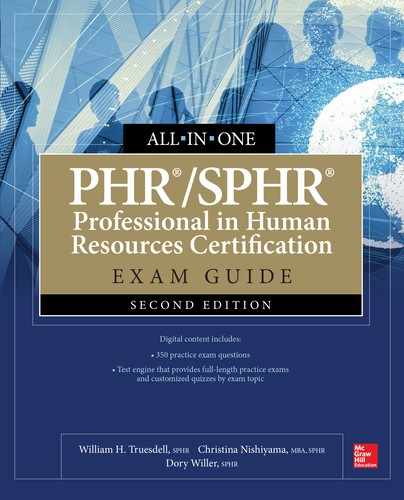Book Description
Publisher's Note: Products purchased from Third Party sellers are not guaranteed by the publisher for quality, authenticity, or access to any online entitlements included with the product.
Fully updated coverage of every topic on the 2018 versions of the PHR and SPHR exams
Get complete coverage of the HR Certification Institute’s Professional and Senior Professional in Human Resources bodies of knowledge inside this comprehensive resource. Written by HR experts, this authoritative guide fully addresses the core knowledge and responsibilities necessary for the implementation and management of HR practices. You’ll find chapter reviews, “In-the-Trenches” sidebars featuring HR experts’ real-world experiences and sage advice, practice exam questions, and in-depth explanations. Designed to help you pass the PHR and SPHR exams with ease, this definitive volume also serves as an essential on-the-job reference.
Covers all PHR and SPHR functional areas, including:
•Business Management
•Leadership and Strategy
•Talent Planning and Acquisition
•Learning and Development
•Total Rewards
•Employee and Labor Relations
Electronic content includes:
•350 practice exam questions
•Test engine that provides full-length practice exams and customized quizzes by exam topic
